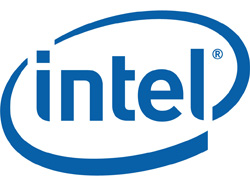A Detailed Look Into PSUs |
|
ATX, EPS, 80 PLUS Specifications
In PSUs there are some standards that are widely accepted by almost all manufacturers. In the following lines we are going to make a brief reference to three of the most recognized, up to date, specifications.ATX Specification

ATX (Advanced Technology Extended) is a motherboard form factor specification developed by Intel in 1995. In general it gives some guide lines in computer cases, motherboards and PSUs design. The first ATX specification released in late 1995 and defined three types of power connectors: a) four pin Molex, b) four pin FDD connector and c) 20-pin Molex motherboard connector. This specification defined that most of PSU's power should be provided on 5V and 3.3V rails because those early times all electronic components were powered by these two rails and 12V were used only for fans and motors of peripheral devices. This original ATX specification remained almost unchanged until the year 2000.
From 2000 to current date many revisions were released with ATX 2.31, which released in 2007, being the latest. The main differences of ATX 2.31 with the previous (ATX 2.2) are the minimum efficiency recommendations that increased to 80% and the 12V minimum load requirement that was lowered. Also the absolute over current limit (240VA per rail) is no longer present, enabling 12V line to provide more than 20A per rail. However the last was usually ignored by the manufacturers since they usually set the OCP trigger point much higher than the stated 20A.
EPS Specification

Entry-Level Power Supply Specification (EPS), which is a derivative of ATX specification, was released for high end computers and entry-level servers. It was developed and released by the Server System Infrastructure forum. In order for a PSU to meet the EPS specification, it must have a 24 pin motherboard connector, an EPS (8-pin) connector and if its capacity is 700-800W one 4-pin 12V connectors and for capacities of over 850W two 4-pin 12V connectors. The current latest EPS specification is 2.92.
80 PLUS Specification

80 PLUS represents an organization that certifies PSUs that have over 80% efficiency at 20, 50 and 100% of maximum rated load and a power factor of 0.9 or greater at 100% load (for Bronze, Silver and Gold certifications, the power factor must be 0.9 or greater on all three load levels. Also the newest Platinum level requires 0.95 or better power factor for servers).
The first market ready PSU was created in February 2005 by Seasonic. At first the only certification level was 80 PLUS but in the first quarter of 2008 the standards were revised and Bronze, Silver and Gold efficiency level certifications were added. The most recent efficiency level certification (Platinum) was added in October 2009. Personally I am looking forward to see what will be the name for the next certification level (Diamond?).
We must stress here that 80 Plus certifies non-redundant PSUs at 115VAC and 230VAC are used only for redundant PSUs (used in servers, data centers). So reviewers that test with 230VAC input officially cannot verify the certification level of the, under review, PSU. Also with 230VAC input the efficiency is increased by 0.5-1.5% compared to 115VAC efficiency levels. below you will find a table with all efficiency level certifications.
| 80 PLUS Certification | 115V Internal Non-Redundant | 230V Internal Redundant | ||||
|---|---|---|---|---|---|---|
| % of Rated Load | 20% | 50% | 100% | 20% | 50% | 100% |
| 80 PLUS | 80% | 80% | 80% | N/A | ||
| 80 PLUS Bronze | 82% | 85% | 82% | 81% | 85% | 81% |
| 80 PLUS Silver | 85% | 88% | 85% | 85% | 89% | 85% |
| 80 PLUS Gold | 87% | 90% | 87% | 88% | 92% | 88% |
| 80 PLUS Platinum | 90% | 92% | 89% | 90% | 94% | 91% |
Apr 17th, 2025 08:52 EDT
change timezone
Latest GPU Drivers
New Forum Posts
- Microcenter GPU Stock status (77)
- 5070 Ti power limit questions (43)
- Can,t download Windows 11 or 10. (9)
- RX 9000 series GPU Owners Club (355)
- Weird pc slow down as soon as PCI-E card is in the system (10)
- TPU's Nostalgic Hardware Club (20253)
- help needed (4)
- Is it worth buying a pi5 with a broken hdmi connector (8)
- SK hynix A-Die (Overclocking thread) only for RYZEN AM5 users (47)
- The TPU UK Clubhouse (26136)
Popular Reviews
- G.SKILL Trident Z5 NEO RGB DDR5-6000 32 GB CL26 Review - AMD EXPO
- ASUS GeForce RTX 5060 Ti TUF OC 16 GB Review
- NVIDIA GeForce RTX 5060 Ti PCI-Express x8 Scaling
- ASUS GeForce RTX 5080 TUF OC Review
- DAREU A950 Wing Review
- Palit GeForce RTX 5060 Ti Infinity 3 16 GB Review
- ASUS GeForce RTX 5060 Ti Prime OC 16 GB Review
- Zotac GeForce RTX 5060 Ti AMP 16 GB Review
- MSI GeForce RTX 5060 Ti Gaming OC 16 GB Review
- The Last Of Us Part 2 Performance Benchmark Review - 30 GPUs Compared
Controversial News Posts
- NVIDIA GeForce RTX 5060 Ti 16 GB SKU Likely Launching at $499, According to Supply Chain Leak (182)
- NVIDIA Sends MSRP Numbers to Partners: GeForce RTX 5060 Ti 8 GB at $379, RTX 5060 Ti 16 GB at $429 (127)
- Nintendo Confirms That Switch 2 Joy-Cons Will Not Utilize Hall Effect Stick Technology (105)
- Over 200,000 Sold Radeon RX 9070 and RX 9070 XT GPUs? AMD Says No Number was Given (100)
- Nintendo Switch 2 Launches June 5 at $449.99 with New Hardware and Games (99)
- NVIDIA Launches GeForce RTX 5060 Series, Beginning with RTX 5060 Ti This Week (92)
- Sony Increases the PS5 Pricing in EMEA and ANZ by Around 25 Percent (85)
- NVIDIA PhysX and Flow Made Fully Open-Source (77)